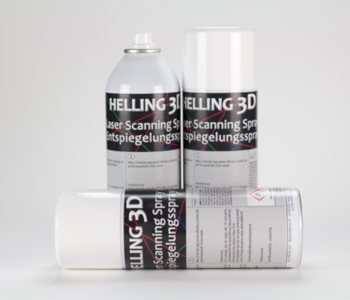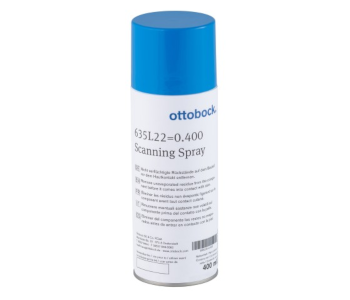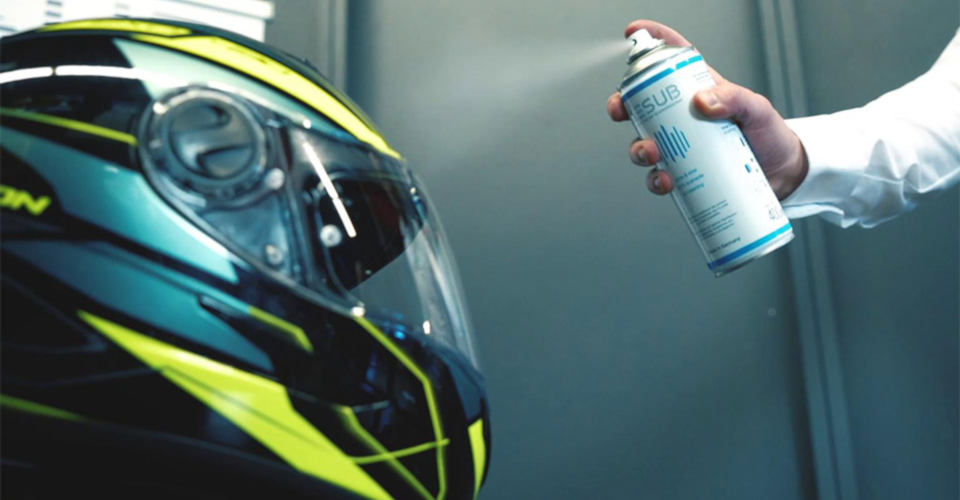3D Scanning Spray – What It Is and How to Use It
A 3D scanning spray applies a semi-permanent coating to the surface of a part that needs to be 3D scanned. By altering the surface to have a white matte finish, 3D scanning spray can significantly boost the accuracy of 3D scanning jobs. Using a 3D scanning spray is usually recommended for objects with black or reflective surfaces or those with very fine details.
3D scanning may seem like this magical technology that turns real objects into digital models. There is actually quite a bit of work that goes behind the scenes. Let’s look at one useful tool – 3D scanning spray – and see why it’s such a crucial part of the process.
3D scanning and its innate challenges
3D scanning technologies can be classified into two broad categories – photogrammetry and laser scanning. These two methods rely on different principles but are similar by challenges that are somewhat similar.
Photogrammetry

Photogrammetry uses a series of still images of the object that are captured from different angles. These images are then processed by a software to deduce the texture, shape, and dimensions of the different parts in an object.
Subjects with reflective or clear surfaces are always problematic in photogrammetry. This is because such surfaces can make the object look different when it is viewed from different angles. With such conditions, the photogrammetry software cannot accurately generate a model.
Time-of-flight
The other 3D scanning method relies on time-of-flight (TOF) technology. Such a sensor emits pulses of light that bounce off the object being scanned. The time it takes for these pulses of lights to return to the sensor is then recorded. The entire scanning process then builds a large database which is then processed by software to generate the 3D model.
There are a lot of objects that can be problematic for TOF sensors. As with photogrammetry, clear or very shiny (or even mildly glossy) surfaces can cause uncontrolled light scattering. On the other end of the spectrum, very dark objects can also absorb too much light and mess up the TOF data.
Though the two methods differ by principle, either one will find it challenging to scan an object with clear, transparent, or shiny surfaces. Unfortunately, these challenging surfaces can come up very frequently, especially if you’re doing 3D scanning as part of your job or business.
How 3D scanning spray works
The main objective of a scanning spray is to manipulate the surface of the subject being 3D scanned to enhance its contrast. This avoids all the potential problems associated with reflective, glossy, clear, or black surfaces. The contrast-enhancing characteristic also helps in capturing fine details or very small gaps and recessed areas in the model being generated.
3D scanning spray is often used when 3D scanning shiny metal parts, objects with pitch-black colors, or objects with clear glass parts. Even if the surface of the object itself isn’t problematic, 3D scanning spray is also beneficial when scanning small objects with complex geometries.
The coat of a 3D scanning spray can most easily be described as white with a matte finish. For best results, it has to be applied evenly and only in very thin layers. Care must be taken to ensure that the spray application does not alter the geometry or dimensions of the subject significantly.
A distinct characteristic of most commercially sold scanning sprays is that they automatically vanish after a while. This makes them useful for use in delicate items like electronics, art, and cars. There will be no need to wash the coat of spray and no trace compounds are left on the surface of the subject. The time it takes for the coat to vanish will depend on several factors including the thickness of the application and the temperature and humidity of the environment.
Where to buy 3D scanning spray
There are different ways to apply a thin white matter coating on the subject you want to 3D print. You don’t even need to actually buy a 3D scanning spray – there are some DIY solutions that you can make using just household products. Of course, there are benefits and drawbacks to both of these options, so let’s look at them individually.
Home-made
When the objective is merely to apply a white coating to your subject, then there really are so many ways that it can be done without having to buy a commercially made 3D scanning spray. Popular options include cornstarch and baby powder.
However, you cannot just dab these white powders directly onto your subject. Achieving a light and even coating is almost impossible without suspending or dissolving the powder in some sort of liquid vehicle. A common solvent used for this method is alcohol.
Cornstarch or baby powder can be dissolved in alcohol and applied using a spray bottle. This makes even application a lot easier. The nice thing about alcohol is that it evaporates in just a few moments, leaving a thin layer of white powder on the surface of the subject.
Using a homemade solution is certainly cheap, but we would not describe it as convenient. Cornstarch or baby powder does not just disappear on its own – you will have to clean it up after. This takes time and can be very hard to do if you’re 3D scanning an object with lots of small holes and recessed sections.
Commercial

If you’re willing to spend a bit, then we recommend getting a commercial 3D scanning spray. These are specially designed sprayable solutions that can be applied in thin layers and vanish automatically without any residue.
A popular brand in this market is AESUB. They sell a variety of 3D scanning sprays that range from vanishing, long-lasting, and permanent. The long-lasting spray is a good option if you anticipate that the 3D scanning process is going to take a while or if it has to be done outdoors. AESUB also offers a powerful spray gun for large-scale application of their vanishing sprays.
The permanent coats can be used similar to a primer. We recommend this if you intend on doing 3D scans of a subject for several hours to a few days. The coating is not completely permanent, as you can clean it off later on if you want to. Its distinct characteristic is that it does not vanish automatically.
You can buy AESUB products on Amazon or via their official website. AESUB has managed to become one of the more recognized brands in this fairly small market. No other brand offers the same variety of products as AESUB.
There are several other 3D scanning sprays from different brands. The more well-known ones are Ottobock, Cyclododecane spray from Kremer, and the Helling 3D scan spray. Take note that not all of these sprays are described as vanishing, so make sure to read the labels before spraying it onto something valuable or sensitive.
If you’re 3D scanning at any professional capacity, then we highly recommend getting a commercial scanning spray. They just perform better and are far more convenient if you need to remove the applied coat after scanning. Even parts as sensitive as camera lenses can be sprayed with vanishing 3D scanning sprays and look virtually unscathed after just a few minutes.
Final thoughts
Despite how amazing the technology may seem, there is actually a lot of preparation that goes into 3D scanning an object. You should have a good lighting setup, a turntable, and well-calibrated sensors. The surface of the subject being scanned might also have to be prepared to make the scanning process as efficient and accurate as possible.
A 3D scanning spray can be one of your best tools for enhancing the quality of 3D scanned models. The truth is that a thin coat of white powder will always be beneficial for 3D scanning, even if the surface of your subject isn’t particularly challenging.


